13 Types of Gutters to Carry Rainwater Safely Away
Author: Omar Alonso | Editor: Omar Alonso
Review & Research: Jen Worst & Chris Miller
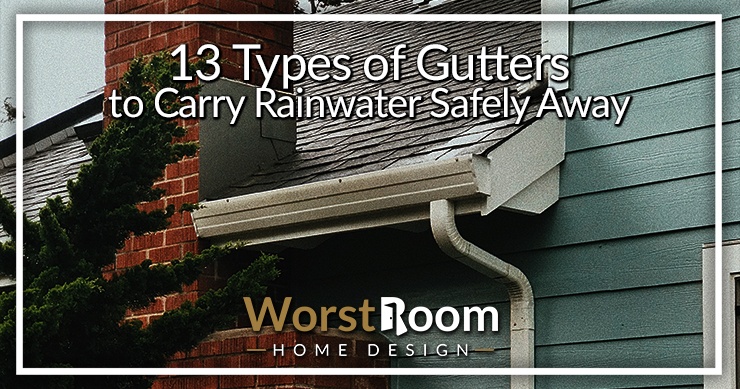
If you live in an area with extreme weather conditions, a gutter is a given. But having the right types of gutters is the difference between success or structural damage.
Gutters generally run along the roof’s base, in addition to keeping you from getting drenched from the downpour, channels water away from the foundation of the house, thereby reducing the risk of flooded basements, damaged siding and landscape erosion.
A gutter also makes it possible to conserve water—adding a rain barrel to the setup can help collect direct runoff from the roof.
However, while the idea of gutters and the structure of gutters are simple, there’s a range of different gutters available in the market.
13 Types of Gutters
From fascia to K-styled gutters, here’s a handy guide to the different types of gutters that you can install at home. You can also check out these gutter alternatives if you're looking for other ideas as well.
Half-Round Gutters
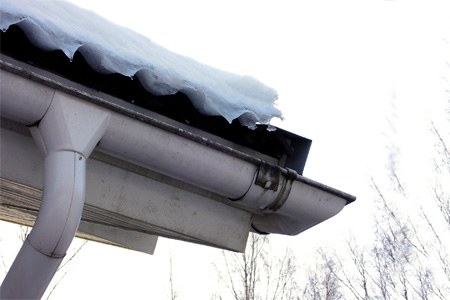
Half-round gutters are simple, traditional rain gutters that are quite basic in appearance but can add a whole new level of “good looking” to your house with their subtle appeal, especially if it’s built in a certain architectural style.
Half-round gutter styles come in a range of styles, such as reverse bead and single and double-bead gutters.
Whatever the type, efficiency remains the mainstay of these gutters—the only variant is how easy or hard it will be to install the gutter in your house and of course, which kind you prefer.
Half-round gutter shapes are also available in a range of materials—this makes it easier for you to customize your gutter or find one that perfectly complements your house’s build and aesthetics, leading to more curb value.
These gutters can also be cut easily to match the length required and even come with hidden hangers to conceal the attachment method.
K-Style Gutters
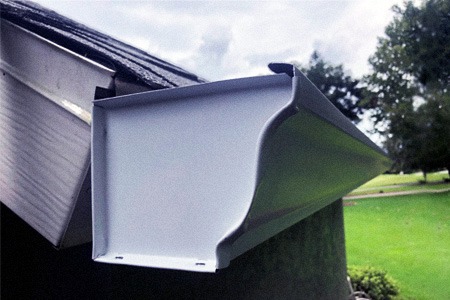
Easily the most popular types of rain gutters in use today, K-style gutters adorn most of the houses in the United States. Though many folks think the name comes from their shape, they’re, in fact, named after their listing in a national association.
K-style gutters owe their popularity to the fact that they perfectly combine functionality and aesthetic value. These decorative gutters are curvier than their other cousins, closely resembling types of crown molding, which homeowners generally install around their home’s ceilings.
K-style gutters can also hold more rainwater than rounded gutters, making them ideal for areas with a constant downpour.
You can also find them in a range of materials and sizes and you’ll also find services that customize and build them according to your needs and your house, onsite, giving you a seamless, leak-proof result.
These different types of gutters also have a flat back, which means that you can screw them flush against the house’s fascia for a seamless look like along your mansard roof.
Sectional Gutters
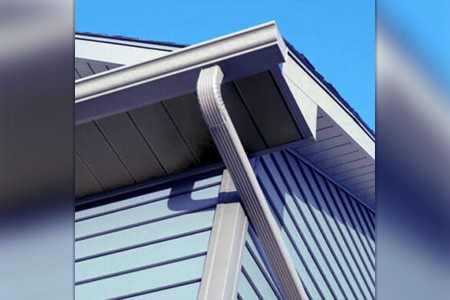
Gutters are also divided based on how they’re built. The two main gutters, categorized by their build, are sectional and seamless gutters. No matter the type, don't allow your house to go for long without gutters.
Sectional gutter types are built using gutter sections of different lengths to create one long gutter. These are pieced together, using connectors and then trimmed to perfectly fit the building.
This makes sectional gutters a great idea for those looking for customized gutters, as well as those who like a good do-it-yourself project.
Sectional gutters are very easy to put together and install and are also quite economically priced, and even more so if you price in not needing to replace any damaged types of wood siding from excessive rainfall.
No matter how many corners your house has or how long the sides, sectional gutters can fit perfectly—they can be easily cut and installed, onsite, with just a hacksaw or other cutting device.
However, sectional gutters are prone to leaking, especially where there is a connector in the structure. Water will flow down the sides of the house in this case, causing mildew and mold, but this can be combatted with regular cleaning and maintenance.
Seamless Gutters
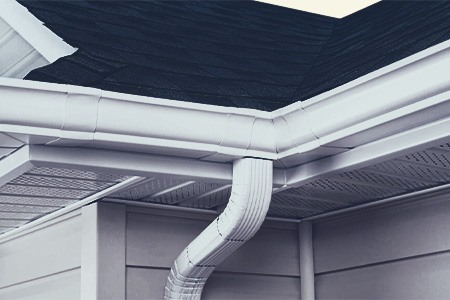
Seamless gutter shapes are the exact opposite of sectional gutters, built from one long piece instead of multiple sections pieced together.
Seamless gutters feature joints only in corners and downspouts—this means that they’re durable, sturdy and less prone to leakage, even in stormy conditions.
Additionally, they’re built from extremely strong materials (generally aluminum) which further adds to the durability. However strong the material, though, the gutters are designed to be lightweight.
Seamless types of gutters are generally available in more color and material choices than sectional gutters and are also less prone to leakage, thanks to fewer seams.
However, this means that you’ll be paying considerably more for one of these. You’ll also need a professional to build and install these gutter options for you, unlike the DIY sectional gutter.
The major drawback with seamless gutters, though, is that if one part of the gutter fails or gets damaged, the whole gutter is affected, which makes repair and replacement quite expensive, especially along a long hip roof.
Vinyl Gutters
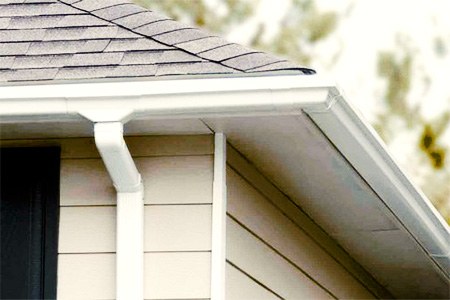
Gutters are also differentiated based on the material they’re built with. These lightweight gutters are generally sectional—great for DIYers.
Of these, vinyl gutter types are the most popular, having quickly become a favorite for their rust-and-corrosion-proof nature, affordability and ease of installation. The problem with these types of gutters is they don't last as long.
Vinyl gutters function extremely well in both mild and harsh climates, provided they’re installed right. If not properly installed, vinyl gutters can sag. They’re also prone to growing brittle and cracking over time—a process that’s sped up by extremely cold weather.
While these gutter styles are great for those on a budget, they’re ideally not gutters that should be used in extremely cold places or places with extreme weather fluctuation.
European Gutters
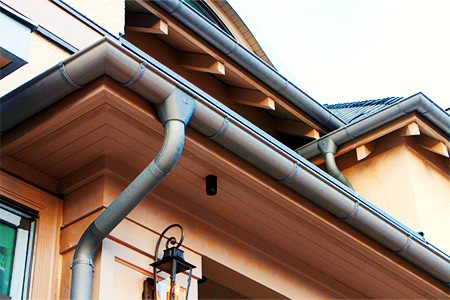
Everything in Europe is lovely and aesthetically pleasing—their gutters are no exception. European gutters are extremely classy and good-looking, adding elegance and sophistication to the building, due to which they’re quite popular.
These gutters are essentially half-round gutters with the bead on the gutter’s exterior, where it’s more visible. European gutters are attached to houses using visible half-round hangers.
European types of gutters are especially popular in copper—shiny, bright and new or aged with distinctive patinas.
These gutter shapes are made from super-strong materials, which means that they hold up better during storms and temperature fluctuations, without getting easily damaged or ripped.
Additionally, water flows through these quicker and in greater volume, owing to full-round downpipes that are wide and less prone to clogging.
The lack of angles that are generally found in K-style gutters also means that small animals and birds will look elsewhere to build their homes, as the round shape isn’t as protective as the angled one.
These gutters, however, are not very compatible with gutter guard systems.
Fascia Gutters
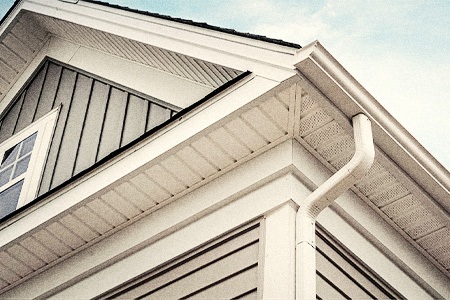
Tall and narrow, fascia gutters are rather misleadingly named—they’re meant for houses without a fascia installed.
These cover the entire fascia height and are installed in houses that don’t already have fascia boards in place. Therefore, these gutter options act as both gutters and fascia boards, hiding the rafter tail edges from sight.
By hiding these, they create smooth lines along the gambrel roof while also preventing water damage and the entry of uninvited guests (small animals and birds) forcing their way into your house through the rafter tails.
Victorian Ogee
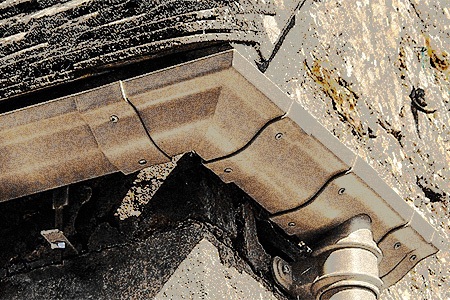
Also called ‘old gothic gutters’, Victorian Ogees are quite uncommon but very distinctive and decorative. These gutters suit only specific homes and are based on cast-iron gutters that were all the rage in the 19th century.
Victorian Ogees flawlessly combine style and tradition and while they look best on period architecture or Victorian-style houses, they can be styled to suit other houses as well.
These types of rain gutters are quite shallow, so if you’re looking for a gutter that can handle high water flow, a Victorian Ogee doesn’t come recommended.
You may get away with it in a small house, but a larger building will warrant more water capacity than these gutter types can provide.
Due to their relatively rare usage, Victorian Ogees are not easily available. You’ll have to get these custom made, which means that they can turn out to be quite expensive.
Zinc Gutters
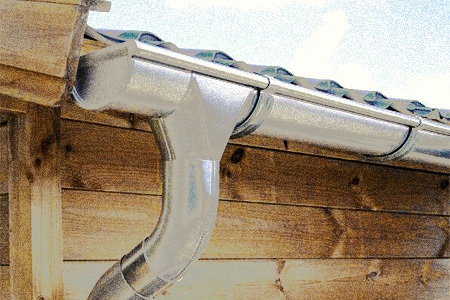
Zinc gutters are durable, lasting twice as long as aluminum gutters. However, this makes them the more expensive option, too.
Zinc gutters are built using a mix of titanium and copper and generally come unpainted. Like copper types of gutters, these gutters also develop patinas that look cool and also protect the gutter from weather elements.
Aluminum Gutters
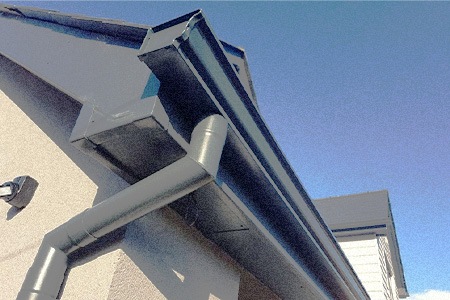
Aluminum gutters are the most commonly found, extremely lightweight, durable and easy to install. They’re corrosion-proof and available in a range of colors, letting you easily match them to the rest of your house’s exterior.
Aluminum gutter options require the skills of a professional for installation and are generally built onsite. They’re also among the cheapest gutter alternatives.
Galvalume Gutters
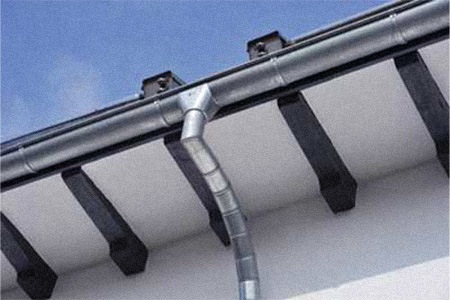
Coated with a mix of zinc and aluminum, this is one tough gutter. Resistant to rust and damage, galvalume gutters are specialty gutters that need to be installed by professionals.
In the right environment, these gutter types can last nine times longer than the usual galvanized steel gutters!
Galvanized Steel Gutters
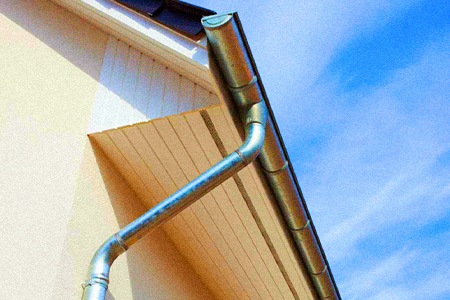
Made of galvanized steel (steel covered with zinc for additional protection), these gutter styles are strong, but prone to rusting and damage, warranting regular maintenance.
These gutter shapes need to be installed by professionals and if incorrectly installed, can result in insufficient water drainage.
Copper Gutters
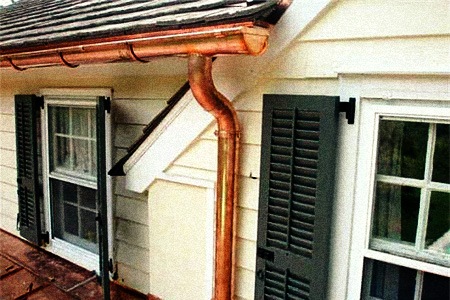
Copper gutters are quite expensive but when installed correctly, don’t bring the worry of mold and mildew growth on them or the additional expense of painting.
Like wine, these grow better with age, developing distinctive, beautiful patinas. However, their short lifespan and high price keep many homeowners wary of them.
Types of Gutters for All Architecture & Design Styles
Yes, gutters exist in many styles and shapes, but get gutted by the multitude. It's why there's always people asking how to get rid of birds nesting in gutters, and how to keep leaves out of them, etc.
Once you consider the build of your house, the material you want, your budget and the final look you want, choosing from the different types of gutters becomes quite easy and you also have our handy guide to help you out. Happy gutter choosing.



